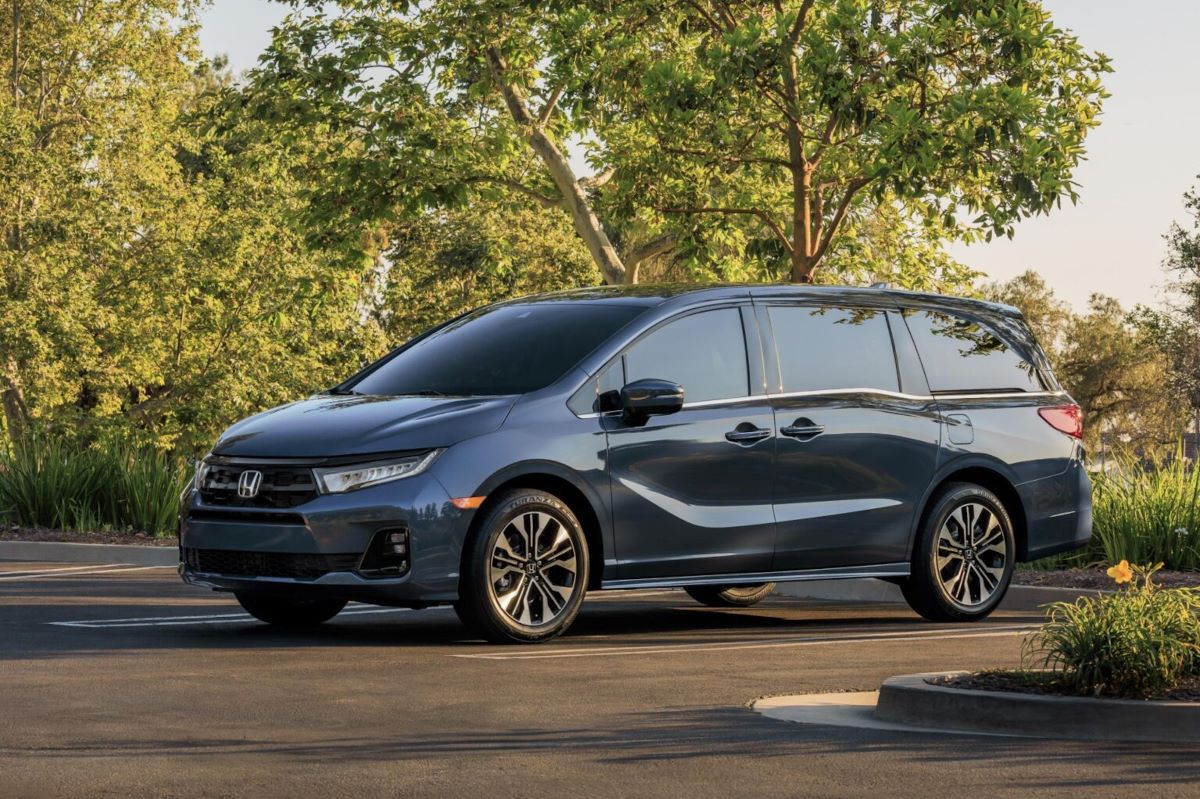Minivans have long been a staple choice for families, offering spacious interiors, practical seating arrangements, and a comfortable ride. As environmental concerns grow and fuel efficiency becomes a priority for many drivers, hybrid minivans have risen in popularity.
These vehicles combine traditional gasoline engines with electric motors, aiming to reduce fuel consumption and emissions without sacrificing the convenience and versatility that minivans provide. However, not all hybrid systems are created equal when it comes to noise levels.
Some hybrids operate with a near-silent electric motor at low speeds and during gentle acceleration, creating a smooth and quiet driving experience that many find desirable, especially on family trips and city commutes.
On the other hand, some hybrid systems are noticeably louder, with mechanical noise from engines and electric components making themselves apparent during acceleration, braking, or even steady driving. This difference in sound levels can be a significant factor in driver and passenger comfort, influencing the perception of quality and refinement.
Understanding which hybrid minivans deliver the most peaceful cabin experience and which come with louder systems can help potential buyers make a more informed choice. This article highlights five hybrid minivans known for their whisper-quiet operation and contrasts them with five models that tend to produce louder hybrid system noises.
These lists consider how manufacturers engineer their powertrains, the quality of sound insulation, and how well electric and gasoline engine transitions are managed. While some buyers may prioritize fuel efficiency and technology features above all else, the noise level within the cabin often plays a crucial role in the enjoyment of a vehicle.
Knowing what to expect from the soundscape of hybrid minivans can make the difference between a relaxing ride and one filled with unwelcome mechanical hums or engine growls. This comparison aims to shed light on these aspects, giving families and drivers the insight they need to choose the right hybrid minivan for their needs.
Also Read: 5 Cars With Ergonomic Cockpits vs 5 With Poor Driver Positioning
5 Hybrid Minivans That Stay Whisper-Quiet
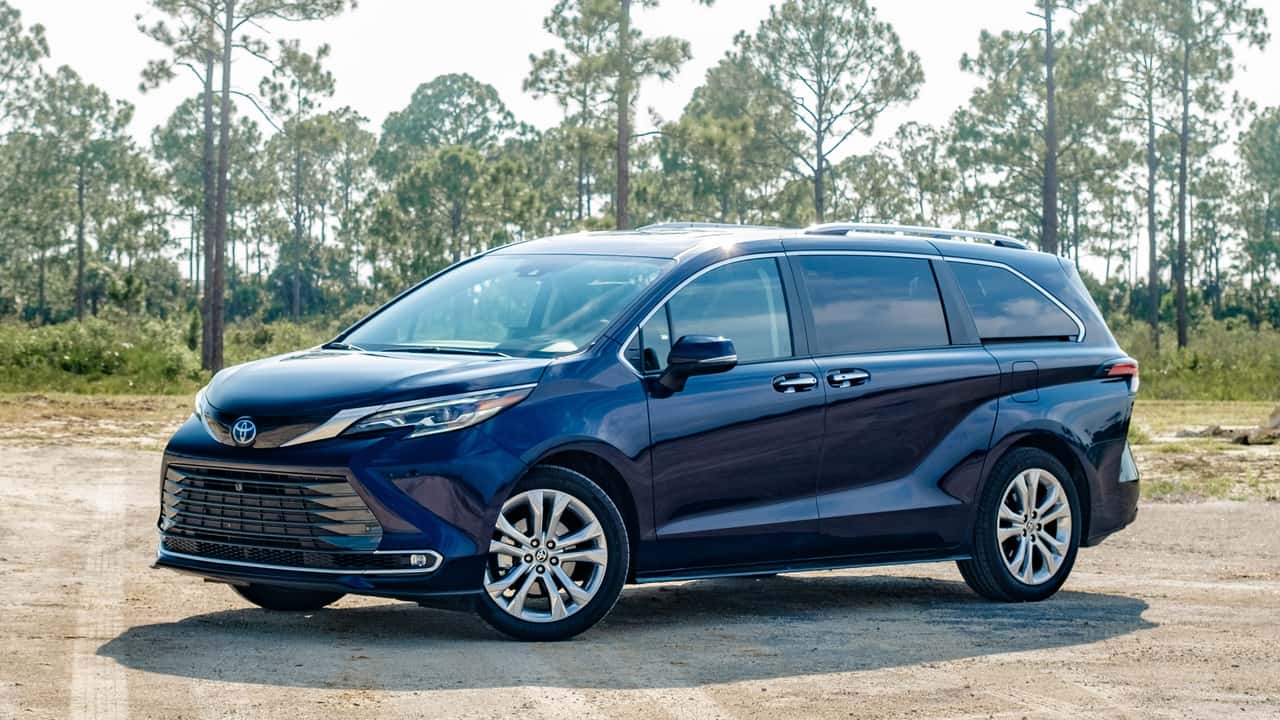
1. Toyota Sienna Hybrid
The Toyota Sienna Hybrid has built a strong reputation not only for fuel efficiency and practicality but also for its refined, quiet operation. One of the standout features of this minivan is its ability to operate under electric power in low-speed conditions, such as residential neighborhoods or stop-and-go traffic, where noise from traditional engines is most noticeable.
The hybrid system, which uses a 2.5-liter four-cylinder engine paired with electric motors, is engineered to be as seamless as possible. The electric motors often provide enough torque to handle typical urban driving without ever needing to engage the gasoline engine, creating an almost noiseless experience for those inside.
Toyota’s use of an electronically controlled continuously variable transmission (eCVT) contributes significantly to the Sienna’s smoothness and lack of vibration. Traditional gear changes, especially in automatic transmissions, can cause noticeable shifts that produce sound and movement in the cabin.
The eCVT avoids this entirely, gliding through acceleration without the usual interruptions. This helps maintain a consistent, calm sensation inside the vehicle, where the absence of transmission noise is just as important as the quietness of the engine itself.
Families, especially those with small children or passengers sensitive to noise, find this approach very beneficial during both short and extended drives.
Toyota’s engineers have also taken deliberate steps in insulating the cabin from outside noise. The Sienna Hybrid includes thick acoustic windshield glass, high-density insulation in the doors and floorboards, and sound-deadening materials behind the dashboard and in the firewall area.
These elements are carefully placed to suppress both powertrain noise and external sounds from the road and wind. Even at highway speeds, the cabin maintains a sense of calm that rivals some premium vehicles. This soundproofing strategy not only contributes to comfort but enhances the vehicle’s sense of quality.
The hybrid battery system is also cleverly packaged to avoid producing any additional noise. Some hybrid systems in other vehicles produce faint hums or clicks when switching between charging modes or transitioning power between motors.
Toyota has minimized these occurrences in the Sienna, shielding the battery and hybrid components both physically and acoustically.
Furthermore, the regenerative braking system, which converts kinetic energy into electricity, operates with barely a whisper. This system allows for smooth deceleration without the grinding or buzzing that can sometimes be found in older or less refined hybrids.
Inside the cabin, the Sienna Hybrid feels like a quiet living room on wheels. Seat padding and upholstery absorb ambient vibrations, while triple-sealed doors prevent sound leaks from creeping in. Even the HVAC system has been designed to run quietly, with fans that scale gradually rather than abruptly kicking on.
The result is a vehicle that fosters easy conversation between passengers and reduces fatigue from noise exposure over time. For anyone seeking a family minivan that provides a relaxed and undisturbed environment, the Sienna Hybrid consistently delivers on that promise.
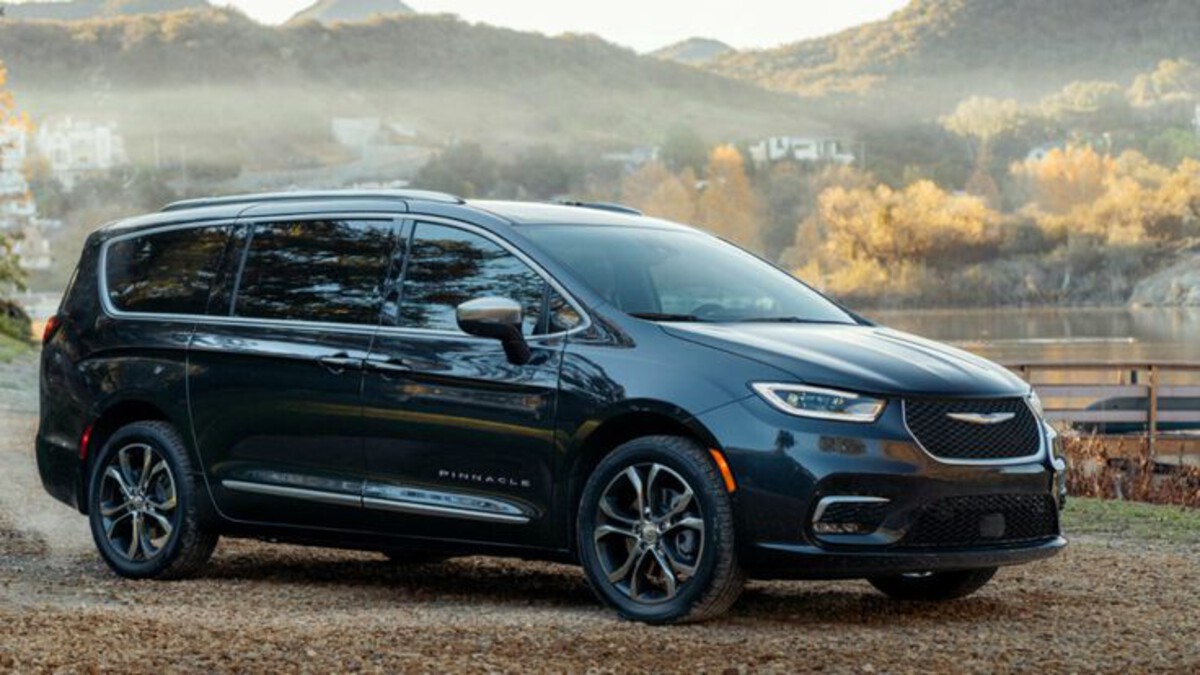
2. Chrysler Pacifica Hybrid (Newer Models)
The newer Chrysler Pacifica Hybrid models offer a much-improved acoustic experience compared to earlier versions. A key reason for this is the way Chrysler refined the powertrain calibration to ensure more seamless interaction between the electric motors and the V6 gasoline engine. In electric-only mode, which can last up to 30 miles under ideal conditions, the Pacifica Hybrid is practically silent.
The sound of tires on pavement becomes more noticeable than any noise from the drivetrain, which speaks volumes about the quietness of the hybrid system. This creates a peaceful setting, particularly beneficial during early-morning school runs or long weekend road trips.
Chrysler’s use of active noise cancellation technology plays a significant role in reducing cabin noise. Small microphones placed inside the vehicle listen for undesirable frequencies generated by the engine or road, and the audio system counteracts them with opposing sound waves.
This type of noise management is more common in high-end sedans and luxury vehicles but has been effectively applied here to make the Pacifica Hybrid stand out in its class. The system doesn’t merely muffle noise it actively eliminates it, making engine hums and road drone much less perceptible.
The Pacifica Hybrid’s structure itself is engineered with silence in mind. Tighter panel gaps, reinforced door seals, and the use of laminated glass on key windows all help keep external sounds out.
Chrysler has even paid attention to components like suspension and wheel bearings, selecting designs that minimize resonance and reduce vibration transmission into the cabin.
Together, these refinements help prevent unwanted creaks or rattles, even when traveling on uneven pavement or gravel roads. It’s this level of detail that separates quiet vehicles from those where soundproofing is more of an afterthought.
Another advantage lies in the unique layout of the Pacifica’s hybrid system. With its battery placed under the floor and away from the cabin walls, any incidental whirring or clicking from battery management systems is physically distant from where passengers sit.
The weight distribution also helps the vehicle maintain a more stable and smooth ride, reducing jolts that could otherwise lead to interior noise. Regenerative braking, another key feature of the hybrid system, operates with smooth transitions, unlike the harsh engagement found in many non-hybrid braking systems.
Inside the Pacifica Hybrid, Chrysler has continued to invest in creating a premium, family-friendly atmosphere. The materials used in the dashboard, door panels, and seating areas are not only visually pleasing but also contribute to sound absorption.
Even the climate control vents are shaped to reduce turbulence noise. Families who spend hours in their vehicle will appreciate the serenity this minivan offers. The Pacifica Hybrid proves that a fuel-efficient family vehicle can also deliver a refined and quiet experience without compromising on features or practicality.
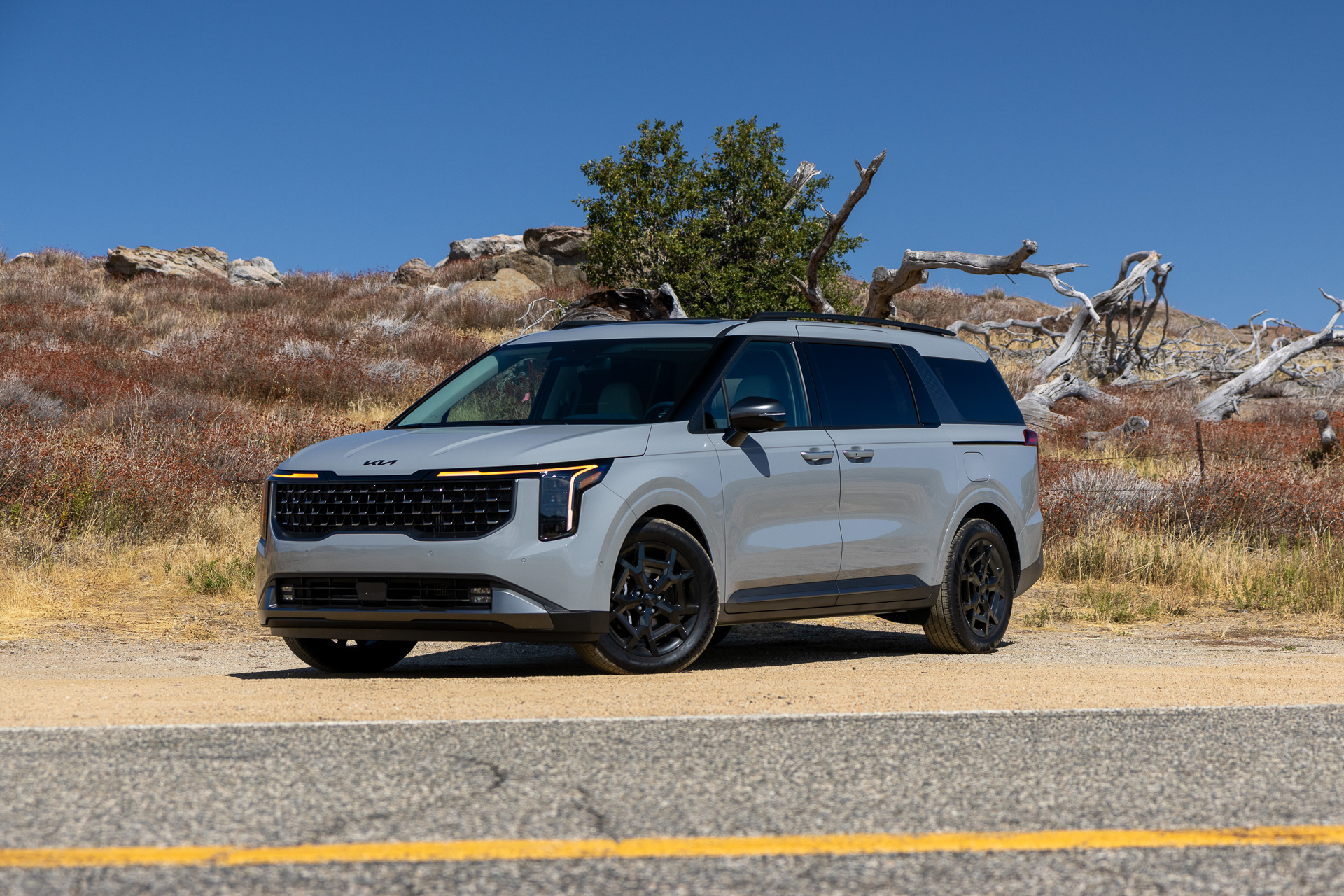
3. Kia Carnival Hybrid (Expected Features and Early Impressions)
Although the Kia Carnival Hybrid has not yet reached global markets in full, early impressions from preview drives and design insights suggest it is built with quiet operation in mind. Kia has established a solid track record in hybrid powertrain development, particularly in its newer models like the Sorento Hybrid and Niro.
These vehicles are already known for their smooth and silent low-speed driving, and the Carnival Hybrid is expected to follow the same path. The projected use of a 1.6-liter turbocharged engine paired with a powerful electric motor offers a balance of power and subtle operation, ideal for minimizing noise.
Kia’s engineers have made concerted efforts to keep powertrain noise low by managing the handoff between electric and gasoline power carefully. In earlier hybrid systems, there could be a noticeable thump or rise in engine noise during this transition, but Kia’s newer software calibrations have improved significantly.
The Carnival Hybrid is likely to feature smart regenerative braking and low-resistance tires to minimize noise from both the braking system and rolling resistance. The driving modes may also include an “Eco” or “EV Priority” setting that favors electric operation in lower-speed scenarios to enhance quietness.
Cabin insulation is another area where Kia has stepped up its game. In the regular Carnival, the use of layered sound-deadening material in the dashboard, floor, and rear panels already contributes to a muted interior.
The hybrid version is expected to build on that foundation with additional padding around the powertrain components, extra acoustic linings in the engine bay, and dual-seal construction around doors and windows.
All of these features will help isolate the cabin from engine and road noise, creating a refined driving experience that will likely rival or surpass some existing hybrid minivans.
The design of the Carnival itself supports a quieter ride. Its unibody chassis structure helps prevent noise amplification through the frame, a problem often found in body-on-frame vehicles.
With seating for seven or eight passengers, the Carnival Hybrid will also benefit from strategically placed interior materials such as thick carpeting, high-backed seats, and sound-absorbing headliners that break up sound waves before they can bounce around the cabin. For parents managing noisy children or those who simply appreciate a calm environment while driving, these features will be welcome.
Kia is also expected to integrate advanced climate control and infotainment systems that operate quietly and efficiently. Fans, speaker systems, and even the hybrid system status indicators will likely be tuned to avoid sharp or intrusive sounds.
These subtle touches contribute to an experience where the driver and passengers are not constantly reminded of the vehicle’s mechanical workings. If Kia executes on its design intentions, the Carnival Hybrid will not only meet expectations for efficiency and comfort, but also stand out as one of the quietest options in its class.
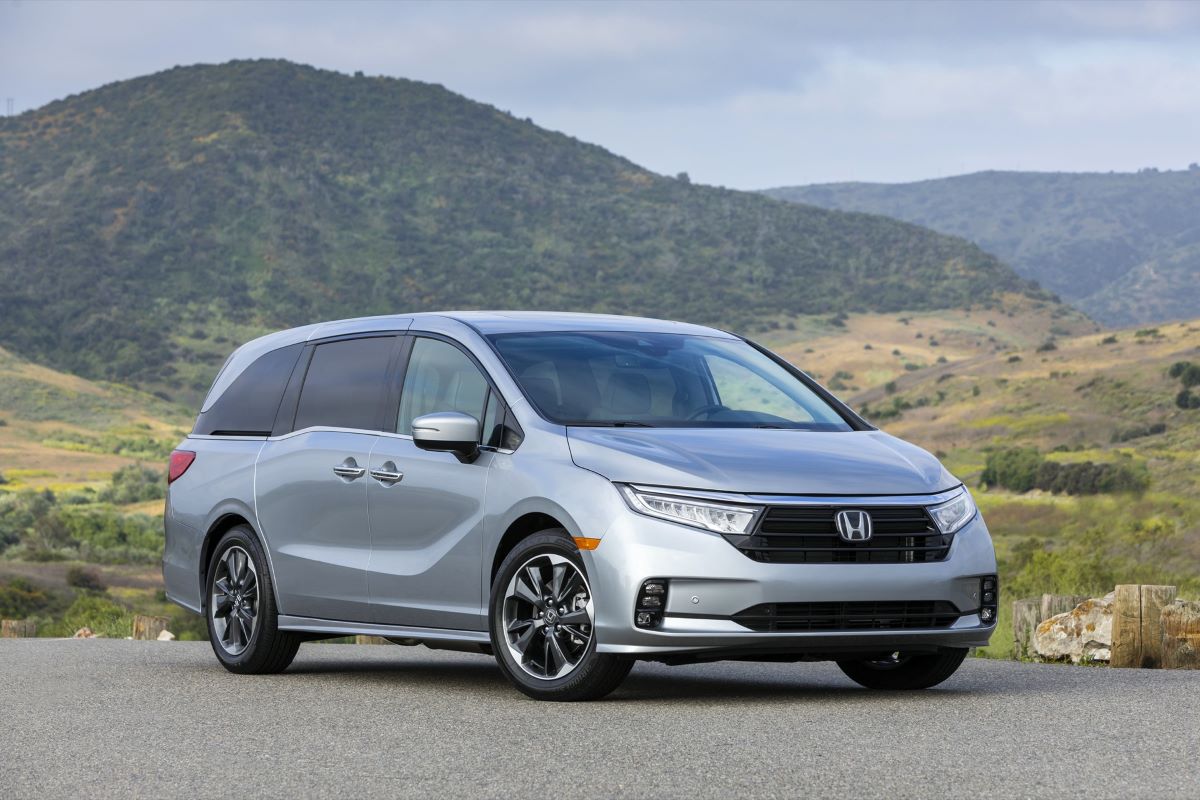
4. Honda Odyssey Hybrid (Speculative Excellence)
Although Honda has not yet released a hybrid version of the Odyssey in the North American market, speculation around such a model continues, and based on Honda’s history with hybrids, expectations for quiet operation are high. Vehicles like the Honda Accord Hybrid and CR-V Hybrid have already demonstrated Honda’s skill in building refined and near-silent hybrid powertrains.
A hypothetical Odyssey Hybrid would likely include the company’s dual-motor hybrid system, which is designed to deliver electric-only propulsion under light conditions and seamless engine engagement during higher power demands.
Honda’s hybrid systems tend to operate with very little noise under most driving conditions. This is due to their preference for using electric drive as much as possible at lower speeds, combined with intelligent engine start-stop systems that operate in the background almost imperceptibly.
If this technology were transferred to a minivan platform, it would result in a vehicle that remains largely silent during city driving and modest cruising, offering families a peaceful alternative to noisier internal combustion-only models.
Interior quietness would likely be enhanced by Honda’s attention to structural and material design. The current Odyssey already includes thick carpeting, layered sound insulation, and multi-stage door sealing.
A hybrid variant would build upon that by addressing noise sources unique to electric and hybrid systems, such as inverter whine and regenerative braking clicks. With Honda’s reputation for refining even minor details, these potential sources of noise would be minimized or fully suppressed in a final production model.
The theoretical Odyssey Hybrid would also likely integrate active noise control to cancel out specific frequencies that arise from the hybrid powertrain.
This, combined with Honda’s relatively silent electric motors and smooth regenerative braking, would create an experience where passengers could enjoy media or conversation without having to compete with engine or road noise.
The Odyssey’s existing quietness would only be further improved in a hybrid version, making it an appealing option for buyers sensitive to sound.
Should Honda decide to bring this model to market, it’s reasonable to expect it to meet or exceed the standards set by current quiet hybrid minivans.
The brand’s focus on ergonomics, ride quality, and user experience would translate well into the hybrid space. While still hypothetical, a Honda Odyssey Hybrid would likely deliver a high degree of quietness and refinement that aligns well with the needs of modern families.
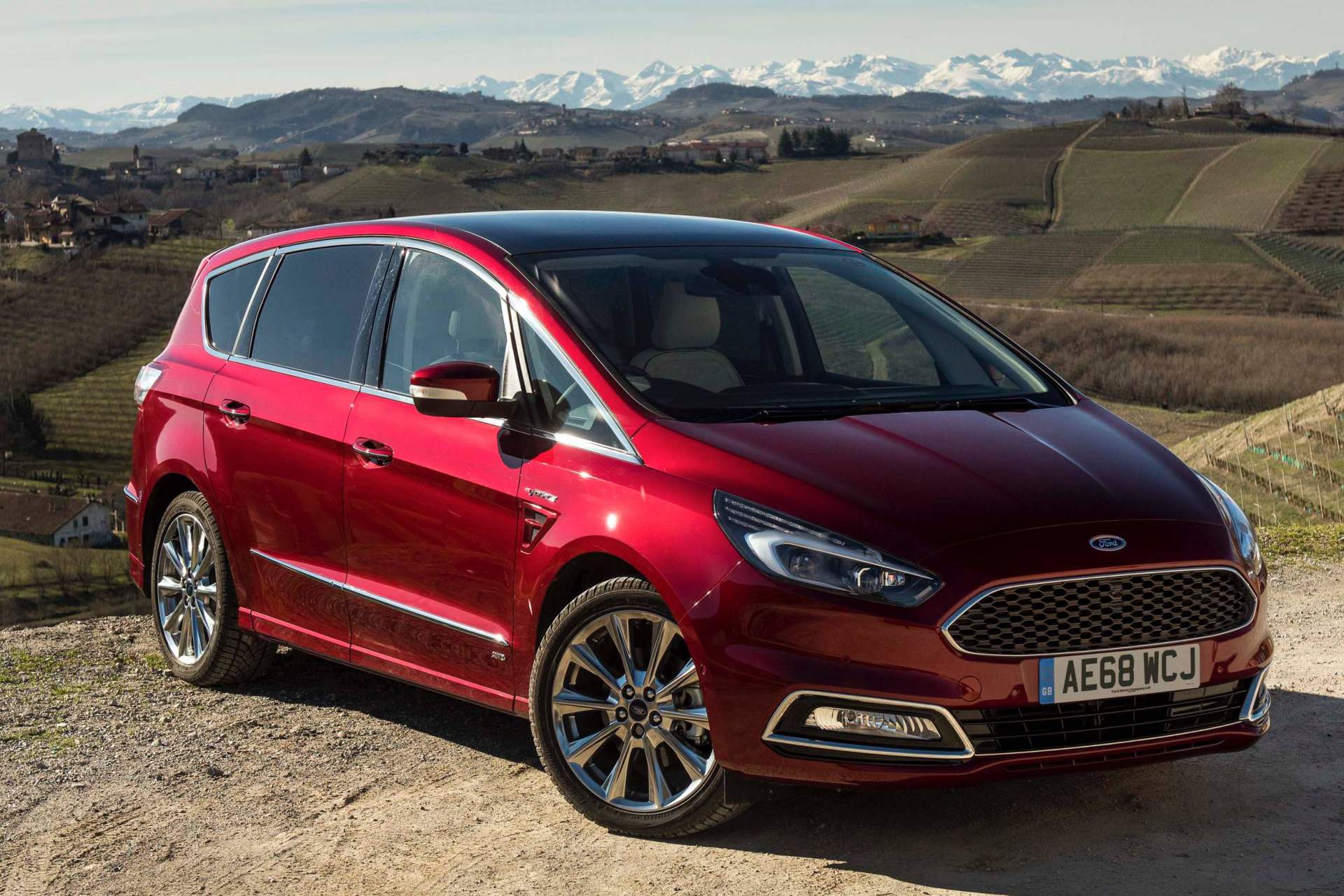
5. Ford S-Max Hybrid (International Model)
The Ford S-Max Hybrid, available primarily in European markets, is another standout when it comes to quiet hybrid minivan operation. Though slightly smaller than typical North American minivans, it shares many design characteristics that make it a good point of comparison.
The S-Max Hybrid uses Ford’s 2.5-liter Atkinson-cycle engine paired with an electric motor and eCVT, offering a powertrain that is engineered for smoothness over raw power. This setup enables the vehicle to drive using electric power at lower speeds with very little noise making its way into the cabin.
Ford has focused on refining the S-Max Hybrid’s engine start-stop system to operate without the abruptness that often characterizes less sophisticated systems. This makes for smooth and almost unnoticeable transitions between hybrid modes.
Additionally, the eCVT in the S-Max avoids the stepped noise increases found in geared transmissions, helping keep the sound level consistent and non-intrusive. For families using this vehicle for both short city trips and longer highway drives, the reduction in cabin noise becomes a strong selling point.
Sound insulation in the S-Max Hybrid is well executed. Acoustic glass, a quiet-running HVAC system, and high-quality door seals prevent wind and road noise from becoming an issue, even at higher speeds.
Ford has used a combination of foam fillers and insulation mats to limit the transmission of vibrations from the road, engine bay, and undercarriage. These efforts result in a cabin experience that is composed and peaceful, despite the occasional engine engagement required during spirited driving or hill climbing.
Passenger comfort is also supported by the thoughtful interior layout. Soft-touch surfaces, thick seating materials, and a vibration-resistant dashboard contribute not only to comfort but to acoustic control.
Since the S-Max Hybrid often serves as both a family shuttle and a long-distance traveler, the quiet interior goes a long way in reducing driver fatigue and keeping younger passengers calm and relaxed.
Though not yet available in all markets, the S-Max Hybrid serves as a great example of how manufacturers can fine-tune hybrid systems for silence.
The engineering choices made in this model reflect a broader understanding of how noise affects the driving experience. For those lucky enough to have access to it, the S-Max Hybrid presents a solid option for quiet, family-friendly hybrid transportation.
5 Hybrid Minivans With Loud Hybrid Systems
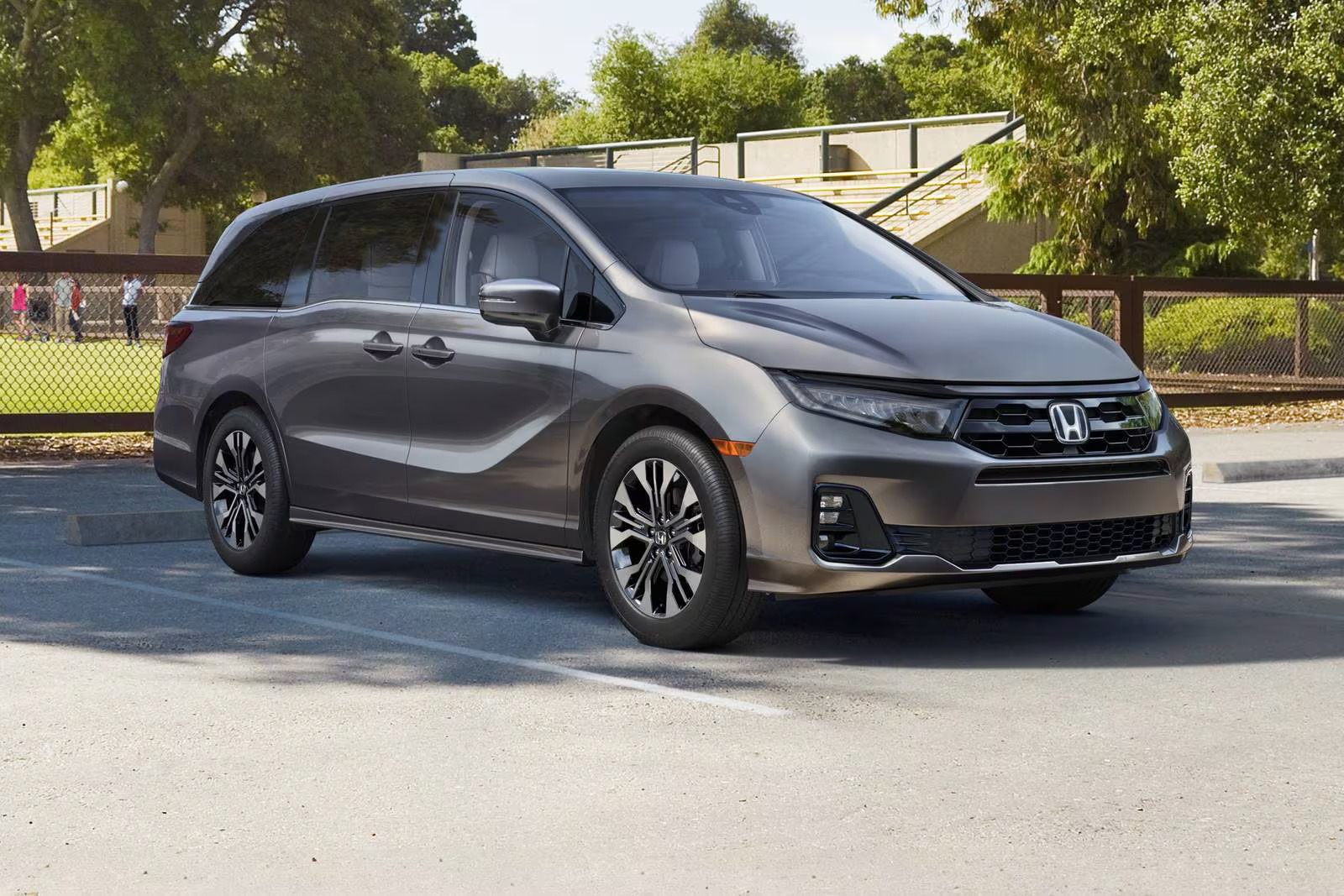
1. Honda Odyssey (Non-Hybrid with Mild Hybrid Technology)
The Honda Odyssey remains one of the most popular minivans on the road due to its reliability, smart interior design, and comfortable ride quality. However, some recent versions feature a mild hybrid system in international markets, and this setup brings noticeable engine noise into the cabin, especially under load.
Because it’s not a full hybrid system, the engine must remain active during most driving situations, meaning drivers never experience the silent electric-only operation that full hybrids offer. This constant engine involvement can become tiring over time, especially during long drives or heavy stop-and-go traffic.
A key limitation of the mild hybrid system is that it lacks a dedicated electric-only driving mode. Instead, the small battery and electric motor are used primarily for assisting acceleration and improving fuel economy slightly.
Since the gasoline engine never fully shuts off during driving, the cabin is regularly exposed to engine hum, particularly when accelerating from a standstill or climbing inclines.
The 3.5-liter V6, while strong and responsive, isn’t quiet under pressure. This results in a noticeable increase in cabin noise during real-world driving scenarios, even though the rest of the vehicle is well-refined.
Cabin insulation in the Odyssey is decent, but it’s not optimized to filter out constant engine sounds. While wind and tire noise are well managed, mechanical sounds from the front of the vehicle still make their way inside.
At highway speeds, the engine maintains a steady drone, and under sudden acceleration, it revs higher, creating a more intrusive sound profile. This issue is more pronounced when the vehicle is heavily loaded or when climbing hilly terrain, where the mild hybrid assist does little to reduce engine strain.
One contributing factor to the perception of loudness is the lack of seamlessness in the integration between the electric motor and gasoline engine. The system doesn’t transition as smoothly as in more advanced hybrid setups.
Drivers can sometimes feel a shudder or hear a distinct change in tone when the engine is engaged more forcefully, breaking the sense of quiet operation that hybrids typically strive for. These transitions can be subtle but frequent, which becomes more noticeable in urban environments where speed changes constantly.
For families seeking a calm and quiet cabin experience, the Odyssey with this mild hybrid setup may not meet expectations. It’s not excessively loud in absolute terms, but compared to the smooth, silent performance of true hybrid minivans, the difference is clear.
The constant presence of engine sound, lack of electric-only mode, and less refined power transitions position the Odyssey’s hybrid configuration as one of the louder options in this category.
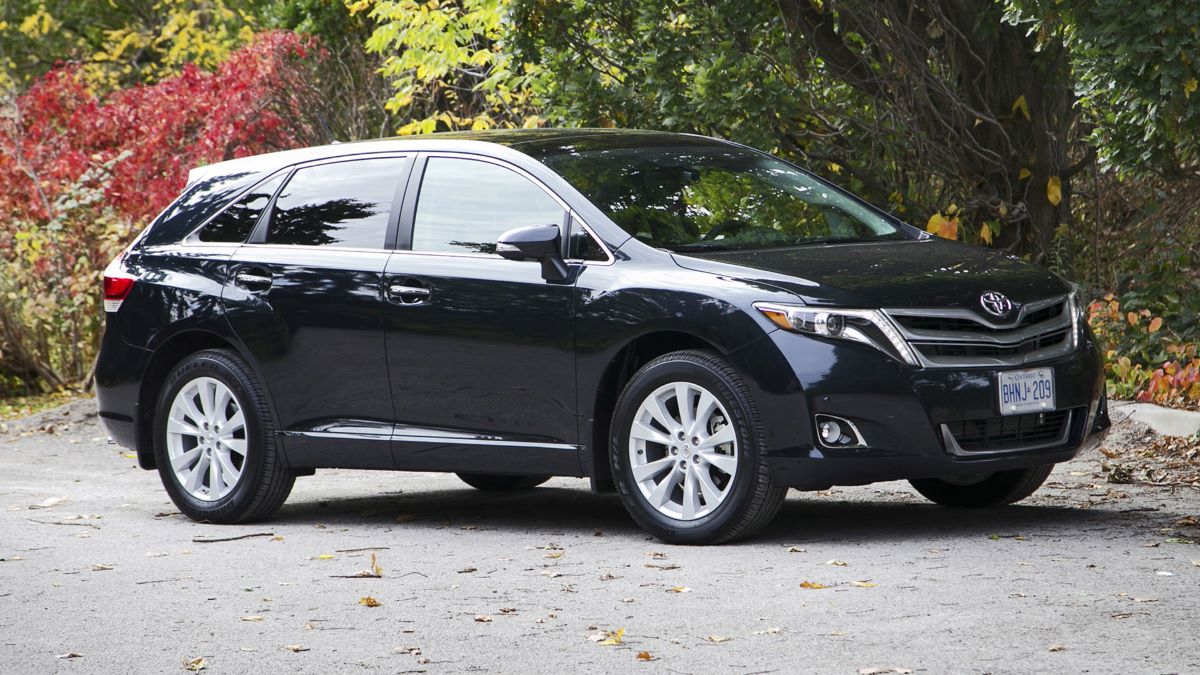
2. Toyota Venza Hybrid
While technically a crossover, the Toyota Venza Hybrid shares a hybrid system similar to the one used in some Toyota minivan concepts, making it a fair point of reference. The Venza Hybrid uses a 2.5-liter four-cylinder engine paired with electric motors, but unlike the Sienna Hybrid, it doesn’t always deliver the same level of refinement.
Under low-speed electric power, the vehicle is reasonably quiet, but once the gasoline engine kicks in, the noise level rises considerably. During acceleration, the engine tends to rev loudly, drawing attention to itself and disrupting the quiet that electric driving creates.
The sound profile of the Venza Hybrid often changes abruptly depending on throttle input. This is largely due to the tuning of the eCVT, which keeps the engine at high RPMs when power is demanded.
This engine behavior, while effective in delivering consistent acceleration, comes at the cost of increased noise, particularly when merging onto highways or overtaking slower vehicles. The steady drone produced by the engine becomes more apparent in these scenarios, with passengers often hearing the revs before feeling the actual acceleration.
Interior insulation helps to a degree, but the Venza’s soundproofing isn’t as comprehensive as that in other Toyota hybrids like the Sienna. Sounds from the engine bay are particularly noticeable near the front seats, and tire noise can also become an issue on rougher pavement.
The cabin materials, while upscale in appearance, don’t offer enough sound-absorbing mass to fully neutralize the hybrid system’s voice under stress. As a result, the noise seeps in more than expected, especially during spirited driving.
There is also a faint whine from the electric motors under certain conditions, particularly when decelerating or cruising at low speeds. This is not uncommon in hybrids, but in the Venza, it’s less well-muffled than it is in higher-end models.
The whine, combined with the pronounced engine growl during acceleration, creates a two-part hybrid noise experience that some passengers may find distracting. The transition between power sources is mechanically smooth but acoustically inconsistent.
For buyers looking at hybrid systems and wondering what to expect from similar platforms in larger Toyota vehicles, the Venza offers a useful case study.
While its efficiency and reliability are strong, the noise profile under typical driving conditions is higher than one might hope for in a hybrid marketed as refined. If this same system were scaled into a minivan-sized vehicle without additional noise mitigation, the result would be a louder-than-average ride.
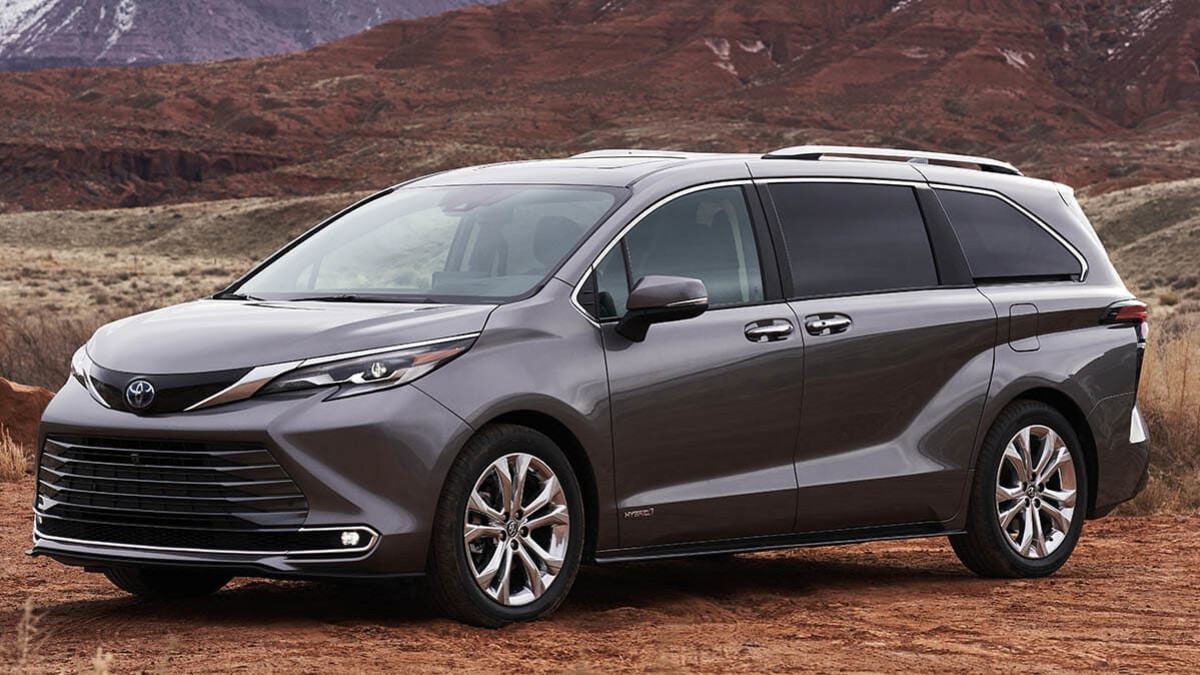
3. Chrysler Pacifica Hybrid (Earlier Model Years)
While the newer Chrysler Pacifica Hybrid has made significant improvements in noise reduction, the earlier models released between 2017 and 2019 had some well-known issues with sound intrusion from the hybrid system. The transition between electric and gasoline power in those early years wasn’t as smooth or silent as one might expect.
The V6 engine would often engage with a noticeable surge, sometimes accompanied by a low mechanical groan or thump. Drivers and passengers could feel and hear the shift, especially during uphill driving or quick acceleration.
Another issue in early Pacifica Hybrids was related to the calibration of the regenerative braking system. While it helped recapture energy efficiently, it sometimes produced an audible whirring or groaning noise as the system slowed the vehicle.
This was especially noticeable in parking lots or during urban driving, where braking occurs frequently. Unlike traditional brakes, the regenerative setup in those versions didn’t feel or sound completely natural, and the noise often drew attention during otherwise quiet moments in the cabin.
The engine’s engagement was particularly jarring in colder climates. On cold starts, the engine revved higher for longer periods, generating more noise than expected. This could be a frustrating experience during early morning drives when one might prefer a quiet cabin.
Although the hybrid system did reduce the frequency of engine use, the times it did engage were often noticeable enough to interrupt conversation or quiet time inside the vehicle. This diminished the premium feel Chrysler aimed to provide in its otherwise well-equipped minivan.
Interior noise insulation in early models also fell short of its potential. While the Pacifica Hybrid included standard soundproofing elements, it lacked the advanced active noise control found in newer trims.
Engine sounds, road vibrations, and even drivetrain clicks from the hybrid battery area could sometimes be heard by rear-seat passengers, especially when the vehicle was lightly loaded. Combined with less refined motor tuning, the experience felt less cohesive than competitors, focusing more heavily on cabin quietness.
For families considering a used hybrid minivan, it’s important to be aware of these sound-related issues in the earlier Pacifica Hybrid. While the vehicle offers strong efficiency and a spacious layout, the hybrid system’s acoustic behavior can be a weak spot.
Many of these problems have been addressed in recent updates, but earlier models continue to be known for a noisier, less polished hybrid implementation compared to newer versions or other options in the market.
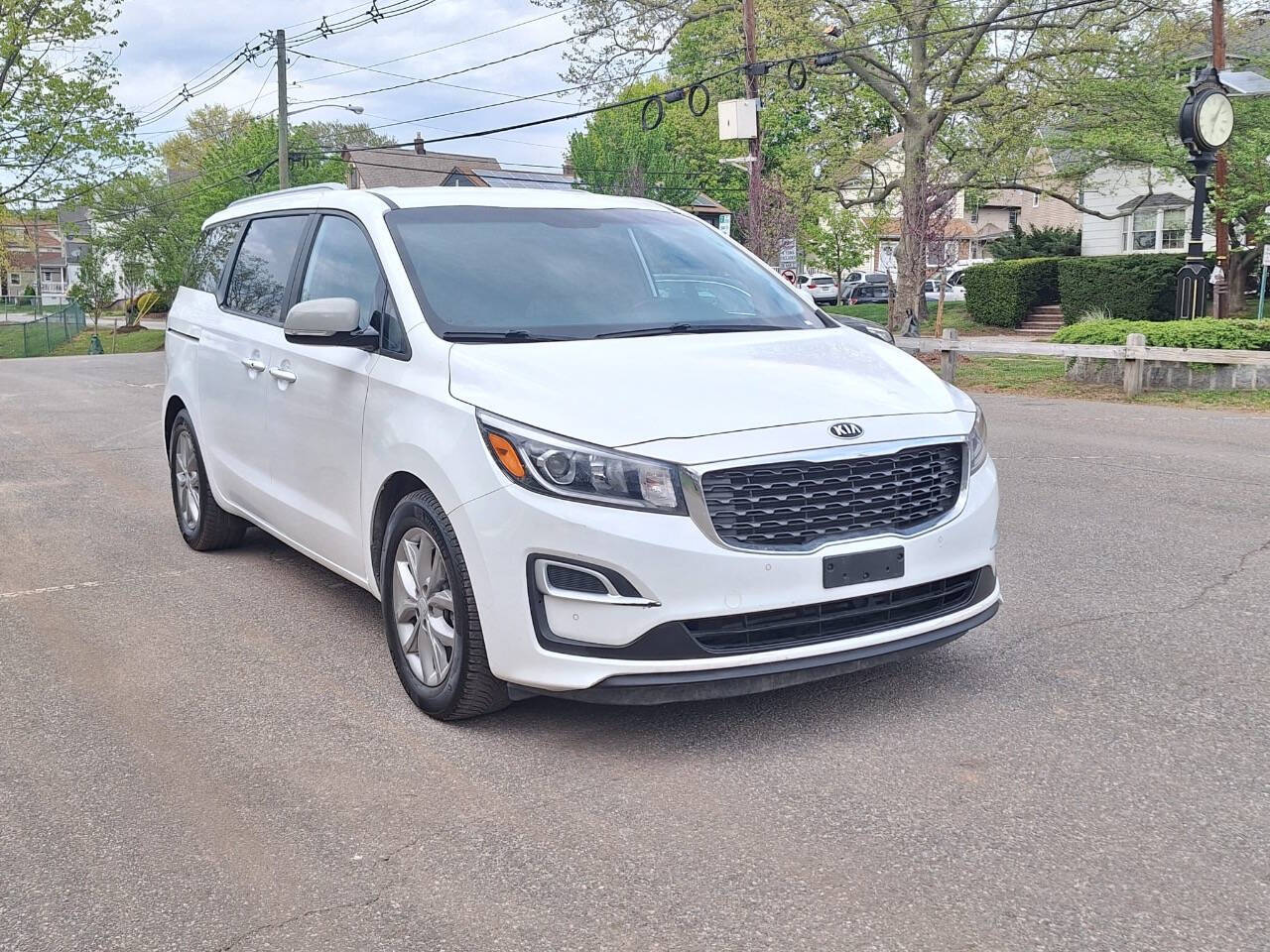
4. Kia Sedona Hybrid (Hypothetical Based on Brand Trends)
Although Kia has not officially released a hybrid version of the Sedona, evaluating the potential noise profile of such a model is possible based on Kia’s history with hybrid systems. Earlier Kia hybrids, such as the first-generation Optima Hybrid, were often critiqued for their less refined engine transitions and electric motor noise.
These systems sometimes struggled to integrate electric assistance smoothly, resulting in inconsistent throttle response and engine noise that became noticeable in both city and highway environments.
Kia’s past hybrid systems occasionally suffered from an engine that engaged abruptly with a higher-pitched rev than expected. If a hybrid Sedona followed the same pattern, it would likely produce engine sounds that stood out in an otherwise quiet cabin.
In addition, older hybrid platforms from Kia sometimes delivered a faint but continuous electric motor whine, especially under light acceleration. This could become a recurring background sound, which may not bother every driver but would be hard to ignore for those sensitive to noise.
Without significant upgrades in sound insulation, the body structure of the Sedona might also transmit vibrations from the hybrid system into the passenger cabin. Sound-dampening materials are often prioritized in premium trims or updated models, but if a Sedona Hybrid were to use the same approach as other Kia vehicles in its class, it might fall short in isolating passengers from the hybrid system’s noises.
This would be especially noticeable in the second and third rows, where thinner panels and larger windows can allow more sound through.
In a vehicle as large as the Sedona, the hybrid components particularly the battery cooling fans, regenerative braking system, and inverter could potentially introduce noise that’s hard to ignore. These systems may activate intermittently and can make humming or clicking sounds that echo through the cabin. Without premium-level noise cancellation or acoustic glass, these sounds would become a regular part of the driving experience.
While Kia has significantly improved its hybrid technology in recent years, a first-generation Sedona Hybrid would likely exhibit some of the same characteristics that early adopters experienced in the Optima Hybrid and Niro.
If and when such a model is introduced, buyers would be wise to look closely at whether the hybrid system is tuned for quietness or simply efficiency. Otherwise, it could land among the noisier hybrid minivan options.
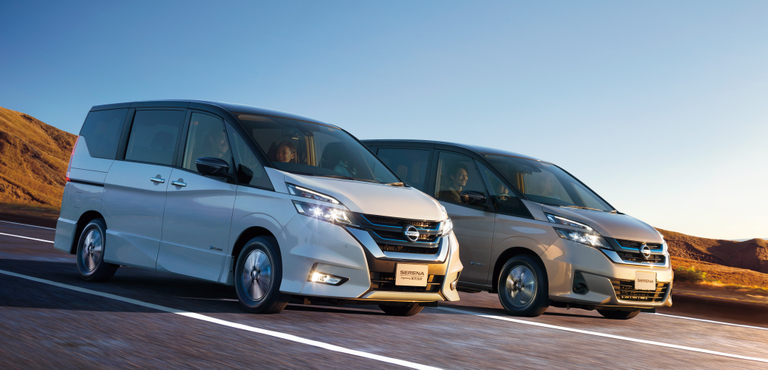
5. Nissan Serena e-POWER (International Market)
The Nissan Serena e-POWER is a unique hybrid minivan available in select markets, primarily in Asia. Unlike traditional hybrids, it uses a series hybrid configuration, where the gasoline engine is not connected to the wheels but only charges the battery, which then powers the electric motor.
While this setup provides excellent fuel economy, the way the engine operates can make the vehicle unexpectedly loud. Since the engine turns on strictly to charge the battery, it can rev at seemingly random times, even when the vehicle is stationary or moving slowly.
This disconnect between engine activity and vehicle movement creates an unusual sound dynamic. Drivers often report that the engine revs loudly during times when it’s least expected, such as sitting at a stoplight or cruising at low speed. This can be startling or distracting, especially for those not used to this type of hybrid system.
The noise itself isn’t particularly pleasant either it tends to be a consistent high-pitched whir that lacks the muffling of a more refined hybrid engine bay.
In terms of sound insulation, the Serena e-POWER does not go far enough in blocking out engine and motor noise. The electric motor is relatively quiet, but the noise created by the gas engine when it turns on and off disrupts the sense of calm one typically associates with hybrid vehicles.
Some owners note that road noise is also higher than expected, particularly at highway speeds, which adds to the acoustic burden. The combination of powertrain noise and insufficient dampening creates a ride that can feel busy and less peaceful.
Another acoustic challenge in the Serena comes from its regenerative braking. The system provides strong deceleration, which helps efficiency, but it’s often accompanied by noticeable sounds ranging from soft buzzing to a more distinct metallic hum.
These noises are most apparent in low-speed urban settings, and while they may not be loud in absolute terms, they stand out because of how often they occur.
Passengers who prefer quiet travel may find the Serena’s approach to hybrid driving a bit intrusive. It’s a solid vehicle in terms of space and fuel economy, but when measured by cabin sound and comfort, it doesn’t compete well with quieter alternatives.
The unique hybrid system it uses creates a trade-off between efficiency and noise control that some may find less than ideal.

